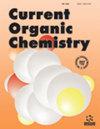Two-step Continuous-Flow Synthesis of 1,2-dimethyl-3-methylsulfanylbenzene via Diazotization and Methanethiolation
IF 2.1
3区 化学
Q3 CHEMISTRY, ORGANIC
引用次数: 0
Abstract
: 1,2-Dimethyl-3-methylsulfanylbenzene is the key intermediate of topramezone. This work designed a two-step continuous-flow device to synthesize 1,2-dimethyl-3-methylsulfanylbenzene via diazotization and methanethiolation. The results showed that compared with the batch process, the continuous-flow method greatly shortened the residence time to 1 minute, avoided the accumulation of large amounts of diazonium salts to reduce decomposition and increased the product yield to 91.7%. At the same time, the continuous-flow process improved the safety and efficiency of the reactions, saved reaction time and had good prospects for industrial application.通过重氮化和甲硫醇化两步连续流合成 1,2-二甲基-3-甲硫基苯
:1,2-二甲基-3-甲硫基苯是托吡美宗的关键中间体。该研究设计了一种两步连续流装置,通过重氮化和甲硫醇化合成 1,2-二甲基-3-甲硫基苯。结果表明,与间歇法相比,连续流法大大缩短了停留时间至 1 分钟,避免了大量重氮盐的积累以减少分解,并将产品收率提高到 91.7%。同时,连续流工艺提高了反应的安全性和效率,节省了反应时间,具有良好的工业应用前景。
本文章由计算机程序翻译,如有差异,请以英文原文为准。
求助全文
约1分钟内获得全文
求助全文
来源期刊

Current Organic Chemistry
化学-有机化学
CiteScore
3.70
自引率
7.70%
发文量
76
审稿时长
1 months
期刊介绍:
Current Organic Chemistry aims to provide in-depth/mini reviews on the current progress in various fields related to organic chemistry including bioorganic chemistry, organo-metallic chemistry, asymmetric synthesis, heterocyclic chemistry, natural product chemistry, catalytic and green chemistry, suitable aspects of medicinal chemistry and polymer chemistry, as well as analytical methods in organic chemistry. The frontier reviews provide the current state of knowledge in these fields and are written by chosen experts who are internationally known for their eminent research contributions. The Journal also accepts high quality research papers focusing on hot topics, highlights and letters besides thematic issues in these fields. Current Organic Chemistry should prove to be of great interest to organic chemists in academia and industry, who wish to keep abreast with recent developments in key fields of organic chemistry.
 求助内容:
求助内容: 应助结果提醒方式:
应助结果提醒方式:


